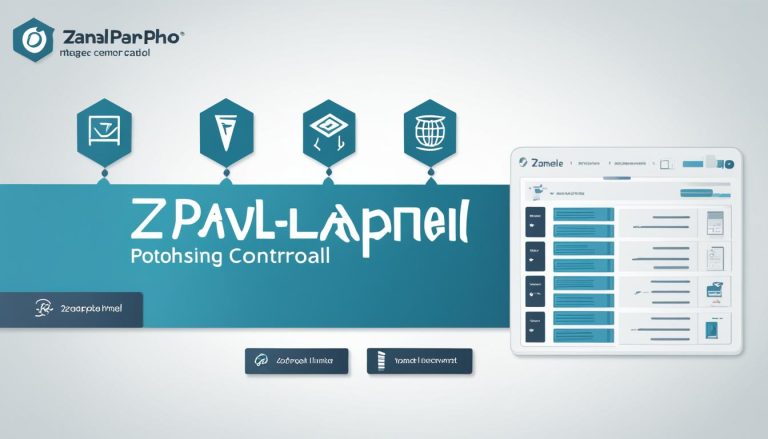Exploring MongoDB: What is MongoDB & Its Uses
I am excited to delve into the world of MongoDB, an open-source document database that revolutionizes the way developers build internet applications. With its flexible schema, scalability, and extensive language support, MongoDB has become a go-to choice for many development teams. In this article, we will explore what MongoDB is, its features, benefits, and use cases.
But first, let’s understand the fundamentals of MongoDB. MongoDB stores data in a JSON-like format, allowing for easy storing and retrieving of information. Unlike traditional SQL databases, MongoDB uses collections and documents instead of tables and rows. Each document can contain key-value pairs and can have nested structures, giving developers the freedom to handle diverse data types efficiently.
So, why would you choose MongoDB for your next project? MongoDB’s scalability is one of its greatest strengths. It effortlessly handles large volumes of data and can efficiently handle high levels of read and write traffic. Moreover, its flexible schema enables the integration of diverse data sources, making it suitable for various industries and applications.
Key Takeaways:
- MongoDB is an open-source document database with a flexible schema approach.
- It is known for its scalability, ease of use, and extensive language support.
- MongoDB stores data in collections and documents in a JSON-like format.
- It is widely used in industries like telecom, gaming, finance, healthcare, and retail.
- MongoDB offers scalability and rapid application development capabilities.
What is MongoDB?
MongoDB is an open-source document database that revolutionizes the way developers store and retrieve data. Unlike traditional SQL databases that use tables and rows, MongoDB takes advantage of a flexible JSON-like document model. This approach allows for variations in data structure, offering developers greater versatility and adaptability.
Instead of relying on rigid schema definitions, MongoDB uses collections and documents to organize and store data. Each document consists of key-value pairs, similar to JSON objects, and can even have nested structures. This flexibility enables developers to seamlessly work with evolving data models and easily modify the schema as needed.
“MongoDB’s document model empowers developers to store and retrieve data in a way that closely resembles their application code structure, making it incredibly intuitive and efficient.”
MongoDB has gained popularity among developers due to its simplicity, scalability, and support for multiple programming languages. It boasts a comprehensive set of features that enhance development productivity and application performance. Let’s explore some of the key features that make MongoDB a preferred choice for developers:
- Flexible schema: MongoDB’s document model allows for dynamic schema evolution and the incorporation of a wide range of data types within a single collection.
- Scalability: MongoDB’s horizontal scale-out architecture enables seamless scaling as data volumes and user traffic increase, ensuring optimal performance even under heavy loads.
- Rich query language: MongoDB provides a powerful query language that supports complex queries, aggregations, and joins, allowing developers to efficiently retrieve and manipulate data.
- Indexing: MongoDB offers various indexing options to optimize query performance, ensuring that queries are executed rapidly, even when dealing with large datasets.
- High availability: MongoDB’s built-in replication and automatic failover mechanisms ensure that data remains accessible and protected, minimizing downtime and maximizing application availability.
- Robust community: With a strong and vibrant community of users and contributors, MongoDB provides extensive documentation, tutorials, and support resources, making it easy for developers to leverage its capabilities.
MongoDB’s document-oriented approach coupled with its rich feature set makes it a versatile database that excels in various use cases. Whether you’re building an e-commerce platform, a content management system, or a real-time analytics application, MongoDB offers the flexibility, scalability, and performance needed to meet your specific requirements. It’s no wonder that MongoDB has become the go-to choice for modern, data-intensive applications.
| Key Features of MongoDB | Benefits |
|---|---|
| Flexible schema | Enables easy adaptation to changing data structures and requirements |
| Scalability | Effortlessly handles large volumes of data and high traffic loads |
| Rich query language | Allows complex queries, aggregations, and joins for efficient data retrieval and manipulation |
| Indexing | Improves query performance for fast data access and analysis |
| High availability | Ensures uninterrupted access to data with automatic failover and replication |
| Robust community | Access to extensive documentation, tutorials, and support resources |
Why Use MongoDB?
MongoDB offers numerous benefits that make it a popular choice among developers and organizations. Its scalability, flexible schema, and ease of use contribute to its wide-ranging use cases. Let’s explore why MongoDB stands out as a valuable tool for rapid application development and efficient data management.
Scalability
One of the key advantages of MongoDB is its ability to handle large volumes of data and high levels of read and write traffic. Its horizontal scale-out architecture allows for seamless scaling across multiple nodes, ensuring optimal performance even as data and user demands increase.
Flexible Schema
MongoDB’s flexible schema provides developers with the freedom to model data based on specific requirements. It supports dynamic schemas, allowing for easy integration of diverse data sources and the ability to store complex data structures. This flexibility makes MongoDB well-suited for applications with evolving data models and changing business needs.
Use Cases
MongoDB is widely used across various industries and applications, including:
- Telecommunications: MongoDB is utilized to handle vast amounts of customer data, enabling efficient query processing and real-time analytics.
- Gaming: MongoDB’s scalability and high-performance capabilities make it ideal for managing player profiles, leaderboards, and in-game analytics.
- Finance: MongoDB is leveraged in financial systems for storing time-series data, transaction logs, and risk analysis.
- Healthcare: MongoDB facilitates the management of electronic health records, patient data, and medical research.
- Retail: MongoDB powers customer data platforms, inventory management systems, and personalized shopping experiences.
These are just a few examples of the vast range of use cases where MongoDB excels, thanks to its scalability, flexibility, and ease of use.
In conclusion, MongoDB’s benefits, including scalability and flexible schema, make it a top choice for developers and organizations seeking a powerful and versatile database solution. Its extensive use cases across various industries further highlight its effectiveness in handling diverse data requirements. With MongoDB, developers can build robust applications and efficiently manage data at any scale.
Document Model
MongoDB’s document model is a key feature that sets it apart from relational databases. In MongoDB, data is stored in a JSON-like format known as BSON, which stands for Binary JSON. The document model allows for flexibility in data structures, making it easier to represent complex and hierarchical relationships.
Unlike traditional SQL databases that use tables and rows, MongoDB organizes data into collections and documents. Each document is a self-contained unit that contains key-value pairs. These documents can have varying structures, allowing developers to store structured and unstructured data together. This flexibility is particularly useful in scenarios where the data schema may evolve over time or where the data itself varies greatly across different records.
When it comes to data retrieval, MongoDB’s document model offers several advantages. Using the powerful query language and rich operators, developers can easily navigate through document structures, perform complex searches, and retrieve specific subsets of data. This flexibility makes MongoDB well-suited for scenarios that require dynamic data access and retrieval, such as content management systems or e-commerce platforms.
In addition to efficient data retrieval, MongoDB’s document model also facilitates indexing. Indexes in MongoDB can be created on individual fields or on combinations of fields within a document. These indexes greatly enhance query performance by allowing the database to quickly locate and retrieve relevant documents without scanning the entire collection.
For example, let’s consider a MongoDB collection that stores information about users. Each document in the collection represents a user and contains fields like name, email, and age. If we frequently query the collection to search for users based on their age, creating an index on the age field would greatly improve the query performance. The index would allow MongoDB to quickly locate the relevant documents that match the specified age criteria, resulting in faster data retrieval.
Benefits of MongoDB’s Document Model:
- Flexible data structures: The document model allows for storing structured and unstructured data together, accommodating varying data needs.
- Efficient data retrieval: MongoDB’s query language and powerful operators enable developers to perform complex searches and retrieve specific subsets of data easily.
- Improved query performance: Indexes in MongoDB enhance query performance by allowing the database to quickly locate and retrieve relevant documents.
To further illustrate the benefits of MongoDB’s document model, consider the example below:
| Traditional SQL Model | MongoDB Document Model |
|---|---|
| Fixed schema with predefined tables and columns | Flexible schema with collections and documents containing varying structures |
| Complex joins required to retrieve related data | No joins necessary, data is stored within a single document |
| Difficult to handle unstructured or evolving data | Easily accommodates unstructured or changing data requirements |
As you can see, MongoDB’s document model provides a more flexible and intuitive approach to data modeling and retrieval compared to traditional SQL databases. It enables developers to store and retrieve data in a way that closely aligns with the structure of their applications while maintaining excellent performance.
Advantages of MongoDB
MongoDB offers several advantages for developers. Its schema-less nature allows for easy data modeling and adaptation to changing requirements.
The document-oriented approach of MongoDB eliminates the need for complex join operations, making it easier and faster to access data.
“MongoDB’s flexibility allows us to quickly adjust our data models as our business evolves. It saves us time and effort with its schema-less structure.”
The horizontal scalability of MongoDB enables smooth handling of large data volumes, ensuring high performance and efficient operations.
Developers also benefit from MongoDB’s support for multiple programming languages, empowering them to work with their preferred tools and frameworks.
Moreover, MongoDB has a mature ecosystem that includes a thriving community and extensive third-party support. This provides developers with valuable resources, documentation, and plugins that enhance their MongoDB experience.

Summary:
- Schema-less nature for easy data modeling and adaptability
- Document-oriented approach eliminates complex join operations
- Horizontal scalability for handling large data volumes
- Support for multiple programming languages
- Mature ecosystem with a strong community and third-party support
Conclusion
After exploring MongoDB, it is clear that this NoSQL database offers developers a powerful solution with numerous benefits. With its flexibility, scalability, and ease of use, MongoDB is a valuable choice for a wide range of applications.
The document model of MongoDB, which stores data in JSON-like documents, allows for efficient data retrieval and indexing. This model also enables the storage of structured and unstructured information in the same document, making data modeling easier and more adaptable.
Furthermore, MongoDB’s extensive language support and robust ecosystem provide developers with a wide range of tools and capabilities to meet their project requirements. Whether you are handling large volumes of data, supporting rapid iterative development, or promoting collaboration among multiple teams, MongoDB has the features and benefits to support your needs.
Consider making MongoDB your database solution for your next project to unleash its impressive features and empower your development process. With its flexibility, scalability, and rich feature set, MongoDB can help you build highly performant and scalable applications.
FAQ
What is MongoDB?
MongoDB is an open-source document database that allows developers to store and retrieve data in a flexible JSON-like format. It is widely used for building highly available and scalable internet applications.
What are the features of MongoDB?
MongoDB offers a flexible schema approach, scalability, ease of use, and extensive support for different programming languages.
What are the benefits of using MongoDB?
MongoDB provides a scalable solution for handling large volumes of data and high levels of read and write traffic. It has a flexible schema, supports complex data structures, and is widely used in various industries and applications.
What is the document model in MongoDB?
MongoDB’s document model allows for efficient data retrieval and indexing. It enables the storage of structured and unstructured information in the same document, and supports nested documents for easy querying and updating.
What are the advantages of using MongoDB?
MongoDB’s advantages include easy data modeling, faster data access without complex join operations, horizontal scalability for handling large data volumes, and support for multiple programming languages.
- About the Author
- Latest Posts
Janina is a technical editor at Text-Center.com and loves to write about computer technology and latest trends in information technology. She also works for Biteno.com.






